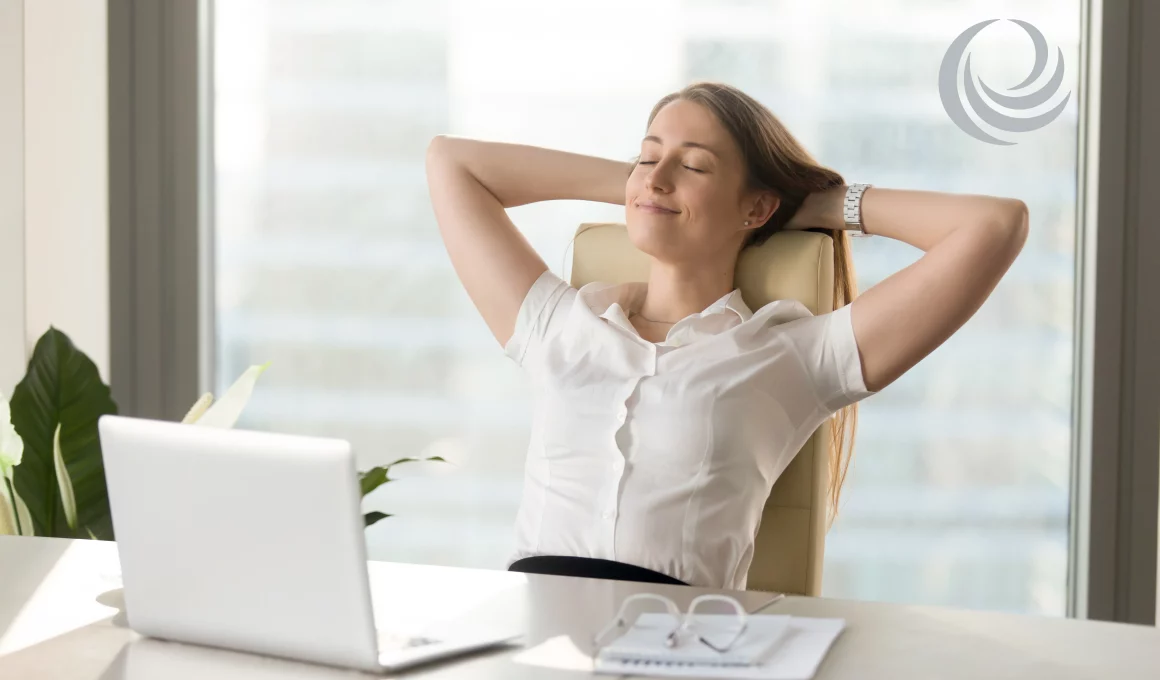Recharging your batteries made easy
Sleep research repeatedly emphasizes that a short afternoon nap is simply part of the daily rhythm. The body needs this break to reduce stress. Not sleeping at noon therefore means pure stress. Our genes are programmed for a power nap, because it corresponds to the normal biorhythm of adults to sleep twice a day – at noon and at night.
This short daytime sleep is now also known as power napping and is considered a simple and effective way to regain energy, improve concentration, and significantly lift your mood.
If you would like to learn more about why our bodies get tired, you will find lots of interesting background information in the article Tired? Why the body needs sleep now.
What is a power nap?
A power nap is a very short sleep lasting 10 to 20 minutes. Unlike a longer afternoon nap, you only slip into a light sleep phase without falling into deep sleep. This is exactly what makes the power nap so effective: you wake up feeling refreshed without feeling groggy. Power napping is therefore the modern, healthy form of the classic afternoon nap and is also referred to as conscious “daytime sleep.”
What happens during power napping?
During power napping, the body reduces stress hormones, the pulse and blood pressure drop slightly, and the brain switches to a restful intermediate state. This short phase is enough to relieve the memory, process information better, and increase the ability to concentrate. The immune system also benefits from this little regeneration.
Studies show that after a power nap, both reaction speed and mood improve measurably. Many people feel more alert, creative, and emotionally balanced after just a few minutes of power napping.
The natural biorhythm is also crucial here. Around noon, our body automatically falls into a performance slump—regardless of whether we have eaten or not. Those who take this signal seriously and use it for a short power nap are following their internal clock and benefiting particularly from the restorative effect.
Naps are good for your health: time out instead of stress
If you feel tired at lunchtime and fight the urge to sleep, you are putting unnecessary strain on your body. Constant stress, in turn, damages your heart, circulation, and mental health. That’s why even a short period of relaxation is enough to regain energy.
You don’t necessarily have to sleep deeply to recharge your batteries—a short nap during the day is enough to noticeably regenerate your body and mind. Studies show that people who take regular power naps have a lower risk of cardiovascular disease and live healthier lives overall.
The benefits of power napping go beyond mere relaxation: a short afternoon nap can boost memory, reduce stress hormones, increase concentration, and even strengthen the immune system. Those who make this little break a regular part of their daily routine feel more productive and emotionally stable in the long term.
It is important to listen to your own signals. Fatigue is not a flaw, but a clear indication from your body that you need a break. Giving in to this impulse can significantly increase your concentration, motivation, and well-being—making power napping a real health booster.
For more details on the different types of naps and how to optimally integrate this short sleep into your daily routine, see our article Naps – small break, big effect.
Sleeping at the office: utilise existing facilities
Quite a few companies have now set up relaxation rooms and retreat areas for their employees. However, these facilities are rarely used. The reason for this lies partly in our upbringing and partly in social values: many people still consider a short nap during the day to be a sign of laziness or a lack of discipline. But there are other obstacles that can stand in the way of a short break for relaxation.
Yet a short power nap is particularly valuable in everyday working life. Whether in the relaxation room, on the couch, or simply in your office chair – just a few minutes with your eyes closed, your arms relaxed, and your feet slightly elevated are enough to noticeably regenerate your body and mind. Such mini-breaks increase concentration, reduce stress, and bring new motivation for the rest of the working day.
A key obstacle is constant availability. In today’s communication-driven society, it is difficult to consciously switch off. Rest periods such as lunch breaks are often interrupted by phone calls, emails, or meetings – a mistake that impairs performance and health in the long term.
Companies that actively promote and positively evaluate short breaks benefit twice: they support the health of their employees and at the same time increase productivity and satisfaction within the team. Power napping in the office is therefore not a luxury, but a smart contribution to modern work culture.
No naps? Outdated practices and their consequences
Even in societies where afternoon naps have always been part of the culture, this beneficial short sleep is now under threat. Pressure to perform, busy schedules, and constant availability are pushing this tradition aside – with noticeable consequences.
Those who forego power napping risk not only fatigue and a drop in performance. The negative effects can be far-reaching: lack of concentration, irritability, bad moods, a higher risk of accidents at work or in traffic, and even depressive moods. In the long term, both physical and mental health suffer.
In short, the afternoon nap is by no means a relic of the past, but an important tool for modern health care. Those who take regular power naps protect their heart and circulation, strengthen their mental performance, and promote emotional balance.
And if you want to know what the long-term consequences of a lack of rest can be, be sure to read our article Lack of sleep – how it makes you ill and how to beat it.
5 tips for the ideal power nap
To get the most out of power napping, it is important to do it right. The duration, timing, and environment are crucial – only then can a short nap become a real source of energy. Here are the 5 most important tips for getting the most out of your power nap.
- Choose the right duration
A power nap should last 10 to 20 minutes at most. During this time, you remain in the light sleep phase and can wake up feeling refreshed. If you sleep longer, you run the risk of slipping into deep sleep – and feeling groggy rather than rested afterwards. - The perfect time
Power napping is most effective between 1 pm and 3 pm. During this phase, our body reaches a natural low in performance, so a short afternoon nap is particularly restful. If you sleep later, however, you risk disrupting your night’s sleep. - Create the right environment
Darkness, quiet, and a comfortable temperature promote rapid relaxation. A quiet room or at least a short break with a sleep mask and earplugs is ideal. The more comfortable the environment, the more effective the power nap. - Lie or sit comfortably
Whether on the sofa, office chair, or in the car during your lunch break, it is important to find a position in which your body can briefly let go. A slightly reclined position relieves muscles and circulation and makes it easier to switch off. - Optional: the “coffee nap”
An insider tip is the so-called coffee nap. If you drink an espresso before your short nap, you will benefit twice over. The caffeine takes effect after about 20 minutes – just when you wake up again. The result: you feel even more alert and focused.
If you follow these tips, you can turn a short afternoon nap into a real energy booster. Power napping thus becomes a method suitable for everyday use to increase concentration, creativity, and health.
Conclusion: Power napping as the key to more energy
A short power nap is much more than a nice luxury – it is an effective strategy for health, performance, and well-being. Just a few minutes of daytime sleep are enough to reduce stress, increase concentration, and relieve the heart and circulation in the long term.
It doesn’t take much to make power napping a part of your daily routine – sometimes all you need is a quiet place, a comfortable chair, or a short break in your home office. However, your break will be even more restful if you have the right sleeping environment.
Products for restful power naps from billerbeck
If you want to make your short break even more comfortable, you can benefit from the matching bedding from billerbeck.
The neck pillow TRAVELLER is the ideal companion for anyone who travels a lot. It can be rolled up for easy transport and fits in any bag – ideal for the office, travel, or short breaks in between. The viscoelastic high-tech foam provides ergonomic support for the neck, while the natural WOOD WORKS!® finish ensures hygienic freshness. This makes even a short power nap during the working day pleasantly restful.
The fibre pillow BELAIR® impresses with its cuddly softness and good support. With its high resilience and breathable design, it ensures a comfortable sleeping environment even during short breaks. In small sizes or as a neck roll, it is the ideal companion for the office, home office, or on the go—perfect for a restful power nap in between.














